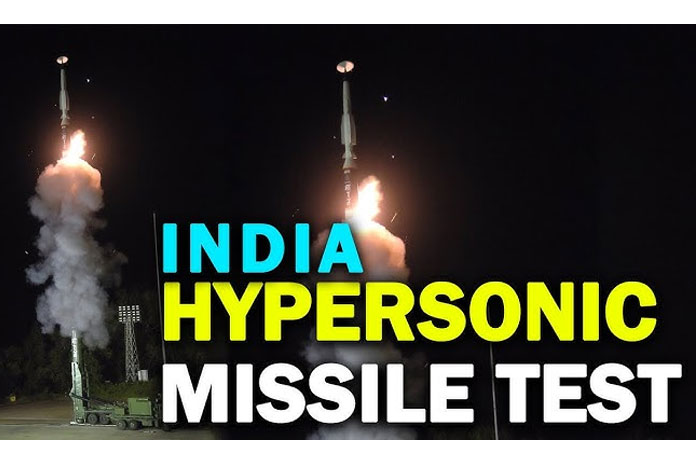In a major milestone, India took a significant step on Sunday 17 November, with the successful flight-test of a long-range hypersonic missile.
Defence Minister Rajnath Singh announced today that the Defence Research and Development Organisation (DRDO) successfully flight-tested a long-range hypersonic missile off the coast of Odisha on Sunday.
Noting the significance of the test he said, “India has achieved a major milestone by successfully conducting flight trial of long range hypersonic missile from Dr APJ Abdul Kalam Island, off-the-coast of Odisha. This is a historic moment and this significant achievement has put our country in the group of select nations having capabilities of such critical and advanced military technologies.”
According to an official press release, the missile can carry various payloads for ranges greater than 1,500 km for the Armed Forces. It has been indigenously developed by laboratories of the Dr APJ Abdul Kalam Missile Complex, Hyderabad, along with various other DRDO labs and industry partners.
Here is what to know about hypersonic missiles and how they play a role in enhancing defence capabilities.
What is a hypersonic missile?
The term “Hypersonic” refers to a speed at least five times the speed of sound (also called Mach-5). This comes down to around a mile per second. Another key feature of such missiles is manoeuvrability, setting them apart from a ballistic missile that follows a set course or trajectory.
The two types of hypersonic weapons systems are Hypersonic Glide Vehicles (HGV) and Hypersonic Cruise Missiles. The HGVs are launched from a rocket before gliding to the intended target while HCMs are powered by air-breathing high-speed engines or ‘scramjets’ after acquiring their target.
According to the website of defence equipment manufacturer Lockheed Martin, hypersonic systems are a “game-changer” for national security.
What are the advantages of hypersonic missiles?
Former Commander of US Strategic Command General John Hyten previously said hypersonic weapons can enable responsive, long-range strike options against distant, defended or time-critical threats (such as road-mobile missiles) when other forces are unavailable, denied access or not preferred.
He made this statement while testifying before the US Congressional Committee on Armed Services. Conventional hypersonic weapons use only kinetic energy, i.e. energy derived from motion, to destroy unhardened targets or even underground facilities.
A 2023 UK Parliament research briefing on the weapon said, “They fly at lower altitudes than ballistic missiles, which means that they may be harder to track at long distances with some surface-based sensors, such as certain radar.”
Are there any disadvantages or challenges to hypersonic missiles?
The Lockheed Martin website says creating a system that is so fast means overcoming several difficult engineering and physics challenges. These include heat generated due to friction and air resistance. The high speed also means it must be operated with “an incredible degree” of precise manoeuvrability.
Basic operations, like communications, also become a significant challenge during hypersonic flight. A system “must maintain connectivity to operators and decision-makers through communications and sensor systems,” it added. They are also more costly to develop in comparison to ballistic missiles.
Where do countries stand on developing hypersonic missiles?
Russia and China are believed to be ahead in developing hypersonic missiles while the US is developing a range of such weapons under an ambitious programme. In May this year, the US Army awarded Lockheed Martin a $756 million contract to deliver additional capability for the nation’s ground-based hypersonic weapon system, the Long Range Hypersonic Weapon (LRHW).
In 2022, the Russian Ministry of Defence announced it had used hypersonic missiles for the first time in the ongoing conflict with Ukraine. “The Kinzhal aviation missile system with hypersonic aeroballistic missiles destroyed a large underground warehouse containing missiles and aviation ammunition in the village of Deliatyn in the Ivano-Frankivsk region,” Defence Ministry spokesman Igor Konashenkov had said.
Several other countries, including France, Germany, Australia, Japan, Iran, and Israel, are also pursuing projects to develop hypersonic missile systems.
(with Agency inputs)










